
This month we continue our exploration of the new arrivals at Sake Online. Hopefully you have had time to savour the recommendations I have covered in Sipping with the Master newsletters 10 & 11.
We have three excellent Junmai sake for you to enjoy (Junmai – designating them as “pure rice sake”, meaning no distilled alcohol is added)
Ama No To – “Heaven’s Door” and Sato No Homare – “Pride Of The Village” come from the north and Fukucho – Moon On The Water from the south. Each of these three brewers also has an extra story to tell!
Ama No To is very much a “Go Local” kind of brewery where the rice is grown close by and harking back to earlier sake brewing practices the rice growers also work at the brewery keeping an experienced eye on the transformation from rice to sake.
Sato No Homare has the claim of being one of, if not the oldest brewery in Japan with 872 years under its belt, guided by 55 generations of the same family!
Fukochu’s, Miho Imada is one of the few women in Japan to be both a brewery owner and head brewer. She is applying an expert woman’s touch to the beautiful soft water in Akitsu, Hiroshima.
Thanks to Esake for the notes on the breweries.
Happy sipping!
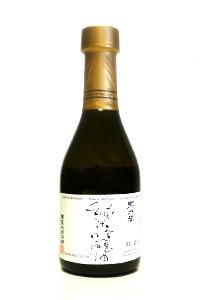 |
Sato no Homare Pride of the Village Junmai Ginjo
Sudo Honke Nihonshu-do +3 Aroma profile: Complex sweet nose of fairy floss, grape and nashi pear candy |
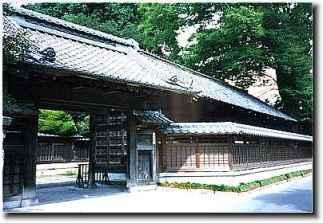 ♦ Kura History ♦
♦ Kura History ♦
Established in 1141 AD, Sudo Honke is presently the oldest Kura still actively brewing in all of Japan (based on the oldest written records of brewing). The current president is the 55th generation president of Sudo Honke. The brewing philosophy of Sudo Honke is simple, clean, and natural. Sake, he says, is made from rice. Good rice comes from good soil. Good soil comes from fresh and high-quality water. Such water comes from protecting our trees. Protecting the natural environment makes excellent sake.
♦ The Sake ♦
Everything brewed here is Junmai Ginjo or Junmai Daiginjo, and almost all of it is unpasteurized. Most of our sake has a wonderful fragrance, and a truly memorable “fukumi-ka,” or a secondary fragrance that arises from within your mouth as you sip. All of our sake is of the absolute highest quality, ultra-premium sake brewed with extreme care and effort, from only the finest rice and water.
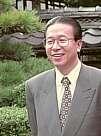 ♦ The People ♦
♦ The People ♦
Mr Sudo believes that sake brewing is closely tied in with the environment, as well as with culture and tradition. “We need to continuously guard against further damage to our natural surroundings, for they provide us with all that we need, both physically and spiritually. Sake brewing is but one of those gifts of nature. Because we are a small company, comprising only 23 local people, we feel a close connection to the community. We work hard at giving back as much as we can to that community.”
♦ Size and Special Characteristics ♦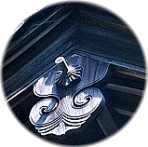
Sudo Honke is very small, brewing only 800 “koku” a year. As one koku (the traditional measure of sake in Japan) is 180 litres, only 144 kilolitres is brewed here each year, in the traditional brewing season which runs from late October to early April. This controlled volume allows Sudo Honke to put hand-made care into all its special Junmai Nama sakes.
♦ Notable Quotes from Master Sudo ♦
“Beyond the wonderful, rich slightly soft water we are endowed with for brewing, we have revived a strain of rice that grew about 2000 years ago discovered in ancient ruins near our brewery. Now, we use that to brew a sake called Sansensomoku. Try it and taste the life in Japan 2000 years ago.”
♦ Toji (Master Brewer) and Kurabito ♦
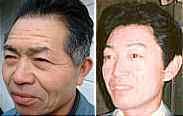 Mitsuo Fujiwara and Hideo Segawa together perform the duties of the toji at Sudo Honke. Both are from the Nanbu Toji school, and hail from Iwate Prefecture in northern Japan. They travel down each winter with their hand -chosen team of assistant “kurabito” sake brewers. Together, this team of six men work hard using their skill, experience and intuition to brew the fine, fragrant and light sake we are so proud of.
Mitsuo Fujiwara and Hideo Segawa together perform the duties of the toji at Sudo Honke. Both are from the Nanbu Toji school, and hail from Iwate Prefecture in northern Japan. They travel down each winter with their hand -chosen team of assistant “kurabito” sake brewers. Together, this team of six men work hard using their skill, experience and intuition to brew the fine, fragrant and light sake we are so proud of.
● ● ● ● ● ● ● ● ● ● ● ● ● ● ● ● ● ● ● ● ● ● ● ● ● ● ● ● ● ● ● ● ● ● ● ● ● ● ● ●
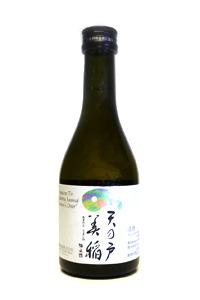 |
Ama No To Heaven’s Door Tokubetsu Junmai
Asamai Shuzo Nihonshu-do +1 Aroma profile: Subtle, fresh grass and herb notes with a ricey earthiness |
♦ Kura History ♦
In 1917, Soukou Kakizaki and a local friend started up our company,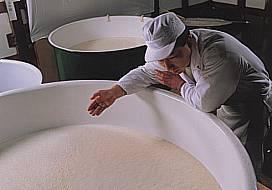 Asamai Shuzo, which today brews the sake brand Amanoto. They began with a working capital of 20,000 yen, with each share of stock priced at 500 yen. It didn’t’ take us long to get up to speed, for between 1930 to 1934 we won four consecutive awards in national sake-tasting competitions. We were forced to stop brewing in 1943, and turn in our equipment for war-related reasons, but were granted a special permit to begin again a year later. We have not looked back since then.
Asamai Shuzo, which today brews the sake brand Amanoto. They began with a working capital of 20,000 yen, with each share of stock priced at 500 yen. It didn’t’ take us long to get up to speed, for between 1930 to 1934 we won four consecutive awards in national sake-tasting competitions. We were forced to stop brewing in 1943, and turn in our equipment for war-related reasons, but were granted a special permit to begin again a year later. We have not looked back since then.
Presently, we use Akita-grown rice and Akita yeast AK-1 to brew our sake, and have won five straight Gold Prizes in the prestigious National New Sake tasting competitions. We are proud of our accomplishments, and intend to continue to strive to maintain our high standards of quality.
♦ The Sake ♦
Our sake presents overall a solid, crisp flavour profile. On top of this dances a subtle but lively array of flavours. Each of our sake, from our average sake to our top-grade Daiginjo, has its own strengths and qualities. Some is quieter, some is fruity and fragrant. But all maintain the basic qualities infused by great rice, great water, excellent yeast, and our toji’s skills.
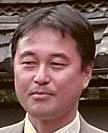 ♦ The People ♦
♦ The People ♦
<< Photo: President Kakizaki Hidemori
Our current president, Hidemori Kakizaki, realizes the importance of the cultural aspect of sake brewing, and strives to strengthen our presence and increase production – but not at the expense of quality of sake or work environment. Says the president: “We brew sake based on what we have learned from the past, staying true to the basic concepts. I want to create a great working environment with good modern equipment, and strengthen our production through that.”
♦ Size and Special Characteristics ♦
Asamai makes only 700 “koku” a year. As one koku (the traditional measure of sake in Japan) is 180 litres, about 125 kilolitres is brewed here each year, in the traditional brewing season which runs from late October to early April. “We would like to brew as much as 2000 koku a year, but our customers have come to appreciate and expect quality sake from us. More than anything else, we want to make sake with increased value for them. Adds their toji: “Well, now that we have won some gold prizes, there is a bit of pressure on us, I would say. I want to brew some expensive sake, but I want to brew some reasonably priced sake as well.
♦ Other Notable Quotes ♦
Our kura is located in Asamai Hiragacho, with a population of about 16, 000 people. It is essentially a farming region, mainly rice, watermelon and apples. However, the beauty of the region has been attracting more and more tourists over the past few years. The water which flows up in springs here has been famous since the Edo era (1600-1868).
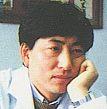 ♦ Toji and Kurabito ♦
♦ Toji and Kurabito ♦
Our toji (head brewer), Koichi Moriya, is relatively young for a toji, being 37. Unlike many toji these days, he lives in the same town as our brewery. He became our toji in 1992, and soon showed his prowess by winning five gold prizes in a row. He has also written a book about his experiences, entitled Natsuta Fuyuzo, filled with anecdotes and warm stories about life in a sakagura (sake brewery).
“Before I got involved in growing rice,” he says, “I just wanted to brew clean, lovely sake. But now that I help grow Miyama Nishiki rice, I want to brew sake that exudes the flavour or rice, and I want people to taste the water that flows from the spring in our kura.”
● ● ● ● ● ● ● ● ● ● ● ● ● ● ● ● ● ● ● ● ● ● ● ● ● ● ● ● ● ● ● ● ● ● ● ● ● ● ● ●
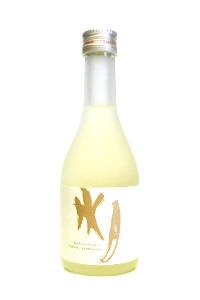 |
Fukucho Moon on the Water Junmai Ginjo
Imada Shuzo Nihonshu-do +3 Aroma profile: Fruity blend of ripe melon, muscat and candy cane |
♦ Kura History ♦
Our brewery was founded in the first year of the Meiji Restoration, 1868, in 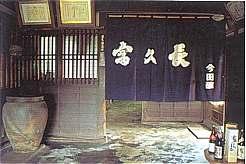 Akitsu in Hiroshima Prefecture. Akitsu has the oldest sake-brewing history in Hiroshima, stretching back 400 years. Akitsu, which faces the Inland Sea and has a population of about 13,000 people, once, had 17 sake breweries, but now there are only three. Hiroshima, however, is still one of the most significant sake-brewing regions in Japan, and is consistently among the top six prefectures nationwide in terms of annual sake production. Historically, the prefecture has always won many awards for its sake, and on occasion has even swept the top three awards in the country. The sake we brew here at Imada Shuzo, called Fukucho, is very representative of this great Hiroshima style.
Akitsu in Hiroshima Prefecture. Akitsu has the oldest sake-brewing history in Hiroshima, stretching back 400 years. Akitsu, which faces the Inland Sea and has a population of about 13,000 people, once, had 17 sake breweries, but now there are only three. Hiroshima, however, is still one of the most significant sake-brewing regions in Japan, and is consistently among the top six prefectures nationwide in terms of annual sake production. Historically, the prefecture has always won many awards for its sake, and on occasion has even swept the top three awards in the country. The sake we brew here at Imada Shuzo, called Fukucho, is very representative of this great Hiroshima style.
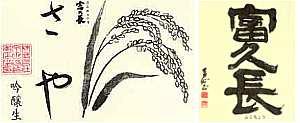 ♦ The Sake ♦
♦ The Sake ♦
In general our sake is soft, clean and smooth, with a solid, lively fragrance. It is also a tad on the drier side. A full 60% of what we make is ginjo-shu; few places can say that. One major factor contributing to the taste and feel of our sake is the water. Water in this region in very, very soft in comparison to most sake-brewing regions in Japan. It melts and absorbs into the palate, taking flavour and fragrance with it, in a very unique way.
♦ The People ♦
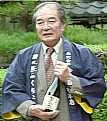 Our president, Yukinao Imada, knows the formula that goes into both making and enjoying great sake. “Water and rice and the people that brew it are treated well and handled with care. Then, when it is ready for drinking, it must be served to people in the best environment possible. That is what makes it all work.”
Our president, Yukinao Imada, knows the formula that goes into both making and enjoying great sake. “Water and rice and the people that brew it are treated well and handled with care. Then, when it is ready for drinking, it must be served to people in the best environment possible. That is what makes it all work.”
Working with him and sharing his vision is his daughter, Miho. Miho is now working intensely hard to do what few women have ever had a chance to do — take over a sake brewery. There is much to learn. Miho knows she must attain intimate knowledge of the sake-brewing process, and the sake itself, if she is to lead 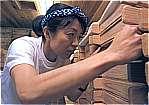 Imada Shuzo into the future. After graduating from Meiji University, she began working for the cultural activities section in a Tokyo department store. But about six or seven years ago, she realized that “the brewery was without a successor, and I saw no other option outside of taking over the family business.” Says Miho: “It was then that sake brewing and its relationship to Japanese culture became interesting to me.” Her father realized that the road would be full of challenges. “Sake brewing is hard work, so I could not insist that my daughter follow in my footsteps and handle the business.” But now, they work together for the future of Fukucho, and for the future of sake in Japan, and in the world.
Imada Shuzo into the future. After graduating from Meiji University, she began working for the cultural activities section in a Tokyo department store. But about six or seven years ago, she realized that “the brewery was without a successor, and I saw no other option outside of taking over the family business.” Says Miho: “It was then that sake brewing and its relationship to Japanese culture became interesting to me.” Her father realized that the road would be full of challenges. “Sake brewing is hard work, so I could not insist that my daughter follow in my footsteps and handle the business.” But now, they work together for the future of Fukucho, and for the future of sake in Japan, and in the world.
♦ Size and Special Characteristics ♦
Our yearly production is quite small, about 1,000 koku. This amounts to about 180 kilolitres, or in other terms, 100,000 1.8-liter bottles (although in actuality we use many different-sized bottles). This volume is perfect for the scale on which we brew, and each drop of sake can be watched with tender-loving care.
♦ Notable Quotes ♦
Our name, Fukucho, was given to us by a man living in the Meiji Era named Sanzaburo Miura. Miura was the man that helped make Hiroshima sake what it is today. Why? How? As mentioned earlier, the water here in Hiroshima is very soft (i.e., low in mineral content). At first, we Hiroshima brewers were all trying to brew using methods like those in Nada, in Kobe, where the water is nice and hard. It was Miura who realized the problem, and went to Kyoto where the water is soft. He learned the differences in brewing sake from hard water and soft water, and mastered the science. He then came back to Hiroshima, gathered all the brewers together, and taught us what he had learned, and what we needed to know to brew the sake that we are now famous for. The rest is history. It is a great honour for us to have been given our name by such an important individual, who will certainly live on in sake-brewing history.
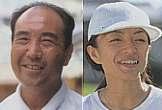 ♦ Toji (Master Brewer) and Kurabito ♦
♦ Toji (Master Brewer) and Kurabito ♦
Our current toji is Mr Kiyotaka Yasuhiro. He is a toji from, naturally enough, the Hiroshima school of toji, and has been with us many, many years. His skill, experience and intuition have long helped make Fukucho sake what it is. As one example of the fruit of his experience, he knows it is necessary to prepare the koji, the heart of the sake-brewing process that breaks starches in the rice to sugars, at just slightly higher temperatures at our brewery due to that soft water. This gives our sake the clean tail and lively feel that it has. Perhaps his most important job now is to teach Miho all he can to prepare her for the future!
………………………………………………………………………………………………………………………………………………………………………
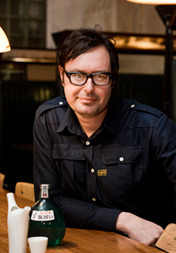 Andre Bishop is a Melbourne based Sake Professional and is recognized as one of Australia’s leading authorities on Sake. His 12 years of experience in designing Asian and specifically Japanese venues include well know Melbourne establishments Robot Bar and Golden Monkey. He currently owns the 22 year old Japanese dining institution Izakaya Chuji and Sake Bar Nihonshu. He is also co-owner and founder of Melbourne’s flagship Izakaya and Sake Bar, Kumo in Brunswick East. Andre studied Sake in Japan and is the only Australian who currently holds a Level 2 Sake Professional Certificate from the International Sake Education Council.
Andre Bishop is a Melbourne based Sake Professional and is recognized as one of Australia’s leading authorities on Sake. His 12 years of experience in designing Asian and specifically Japanese venues include well know Melbourne establishments Robot Bar and Golden Monkey. He currently owns the 22 year old Japanese dining institution Izakaya Chuji and Sake Bar Nihonshu. He is also co-owner and founder of Melbourne’s flagship Izakaya and Sake Bar, Kumo in Brunswick East. Andre studied Sake in Japan and is the only Australian who currently holds a Level 2 Sake Professional Certificate from the International Sake Education Council.
Andre is available for Consulting on Sake, Japanese Beverage Lists, Sake Staff Training and Sake Equipment. Contact: andrebishopsan@gmail.com
Sake Master Andre’s blog: www.sakemaster.com.au
Twitter: sakemasterandre
Sipping with the Sake Master #11
Sipping with the Sake Master #10
Sipping with the Sake Master #9
Sipping with the Sake Master #8
Sipping with the Sake Master #7
Sipping with the Sake Master #6.2
Sipping with the Sake Master #6.1
Sipping with the Sake Master #5.2
Sipping with the Sake Master #5.1
Sipping with the Sake Master #4
Sipping with the Sake Master #3
Sipping with the Sake Master #2
Sipping with the Sake Master #1
Please click here for Sake Master Andre Bishop’s older interview




